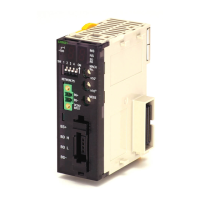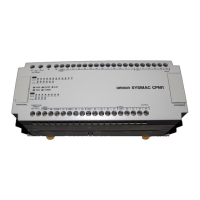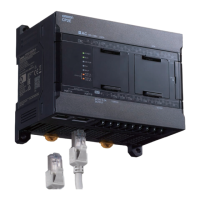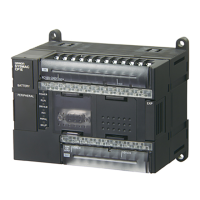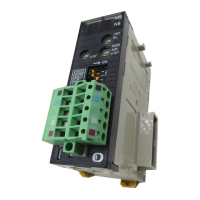515
3. Instructions
CS/CJ/NSJ Series Instructions Reference Manual (W474)
Double-precision Floating-point Instructions
3
Double-precision Floating-point Instructions
Double-precision Floating-point
Instructions
Double-precision Floating-point
Instructions
Data Format
Floating-point data expresses real numbers using a sign, exponent, and mantissa. When data is
expressed in floating-point format, the following formula applies.
Real number = (-1)
s
2
e-1,023
(1.f)
s: Sign
e: Exponent
f: Mantissa
The floating-point data format conforms to the IEEE754 standards. Data is expressed in 32 bits, as
follows:
Number of Digits
Fifteen digits are effective for double-precision floating-point data.
Floating-point Data
• The following data can be expressed by floating-point data:
•-∞
• -1.79769313486232 × 10
308
≤ value ≤ -2.22507385850720 × 10
-308
•0
• 2.22507385850720 × 10
-308
≤ value ≤ 1.79769313486232 × 10
30
•+∞
• Not a number (NaN)
Data No. of bits Contents
s: sign 1 0: positive; 1: negative
e: exponent 11 The exponent (e) value ranges from 0 to 2,047. The actual exponent is the value remaining after 1,023
is subtracted from e, resulting in a range of -1,023 to 1,024. “e=0” and “e=2,047” express special
numbers.
f: mantissa 52
The mantissa portion of binary floating-point data fits the format 2.0 > 1.f
≥1.0.
63 62 52 51 0
Sign
se f
Exponent Mantissa
−∞
−1
0
+∞
1
−2.22507385850720×10
-
308
−1.79769313486232×10
308
2.22507385850720×10
-
308
1.79769313486232×10
308

